Samsung Galaxy S8 vs LG G6
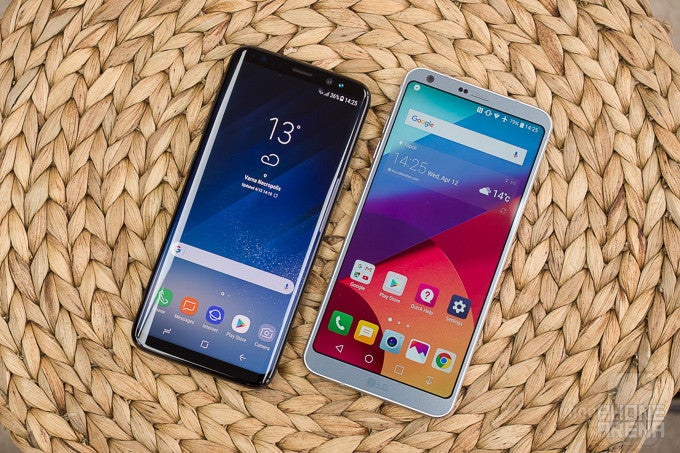
Introduction
2017 will likely go down in smartphone history as the year when the Samsung Galaxy S8 and the LG G6 seriously disturbed the waters with their arrival, marking a paradigm shift for smartphone design. They are flashy, they look cool, they have top-end internals, and they reside in one and the same segment. Thus, a clash between those two South Korean entrants is inevitable. Which one will end up on top, waving the flag of victory? Let's try to find out!
Design
The future is here, no doubt about it
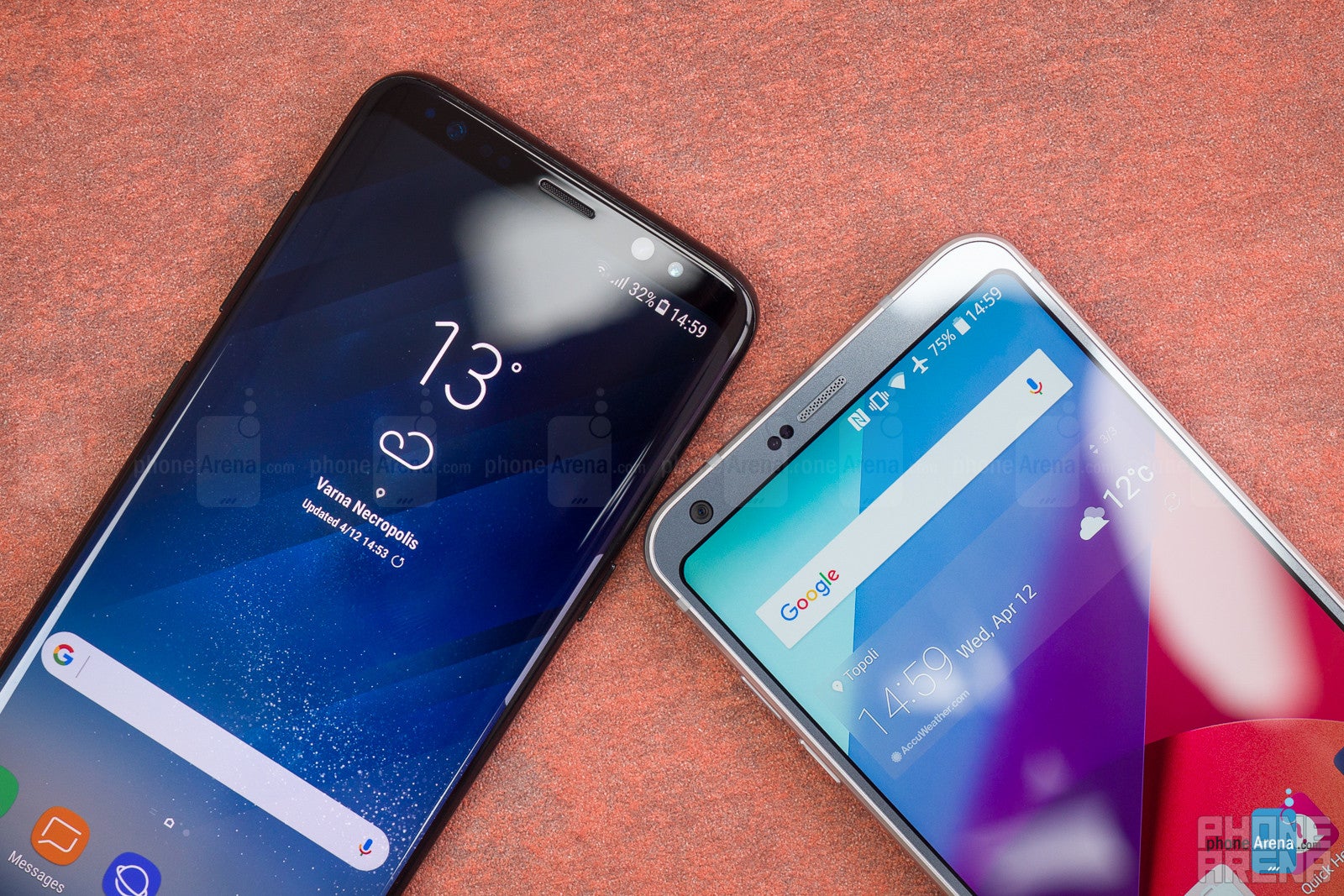
No beating around the bush – design is an area in which Samsung and LG have invested quite a bit. Both the Galaxy S8 and G6 are a far-cry from the previous representatives of their respective flagship lineups. The reason for that is immediately obvious to anyone who sees either phone on a picture or in real-life — the extremely high screen-to-body ratio introduced by the bezel-busting design makes the duo feel pretty "next-gen".
Compared to one another, the two South Korean wonderboys are rather similar in terms of design philosophy, but differ slightly in the execution. The display occupies the predominant portion of the front of either device, with very thin bezels at the top and bottom. Then again, with its neatly-curved display, the Galaxy S8 feels and looks a bit more futurstic than the boxy LG G6, which is completely flat on the front. The G6 doesn't do away with the side bezels, whereas the Galaxy S8 leaves the impression of being a mostly bezel-less affair. Both phones also sacrifice a bunch of pixels near their corners, which are rounded — the G6 is said to be doing that for added protection, whereas Samsung was pursuing visual appeal.
Beautiful... and slightly impractical — the edge display is prone to accidentally registering your touches, which could end up being an aggravating side-effect of the non-flat screen.
Size-wise, at 2.83” (71.9mm), the LG G6 is a bit wider than the Galaxy S8, which stands at 2.68” (68.1mm). In terms of thickness, the difference is marginal with the LG G6 being just a millimeter thinner than the Galaxy S8; however, the G6 is a bit heavier than the Galaxy S8 but most people won't be able to discern a difference. The height of the two phones is exactly the same (5.86”, 148.3mm) – make no mistake, these are two tall devices, and you will likely have to stretch your hand to reach the status bar even if you own a pair of relatively large hands.
Samsung has ditched its staple hardware set of keys in favor of a software solution because there's simply not enough space to accommodate its signature home button. Mind you, the display area where the software home button resides is pressure-sensitive, allowing you to interact with this one no matter what app you're using at the moment and even if it's running in fullscreen. The LG G6, on the other hand, relies on a set of ordinary software buttons and has none of that pressure-sensitive mojo on the deck.
The Galaxy S8's fingerprint scanner is at the back and so is the G6's, but we tend to favor LG's positioning more as it's easier to locate and interact with. It's worth noting that the G6's sensor also doubles as a button, whereas the one Galaxy S8 isn't clickable. The latter has an additional button, though – it's intended for easily launching Bixby, Samsung's fancy new smart assistant.
Another thing we love about both phones is that they are IP68 water- and dust-proof and also boast standard 3.5mm audio jacks.
Which one feels better in the hand? Depends on who you ask. There's no denying the Galaxy S8 looks great and so does the G6, but from a true usability perspective, LG's flagship feels a tad more practical to us, due to the flat screen.
Display
The Galaxy S8 wins an important victory here
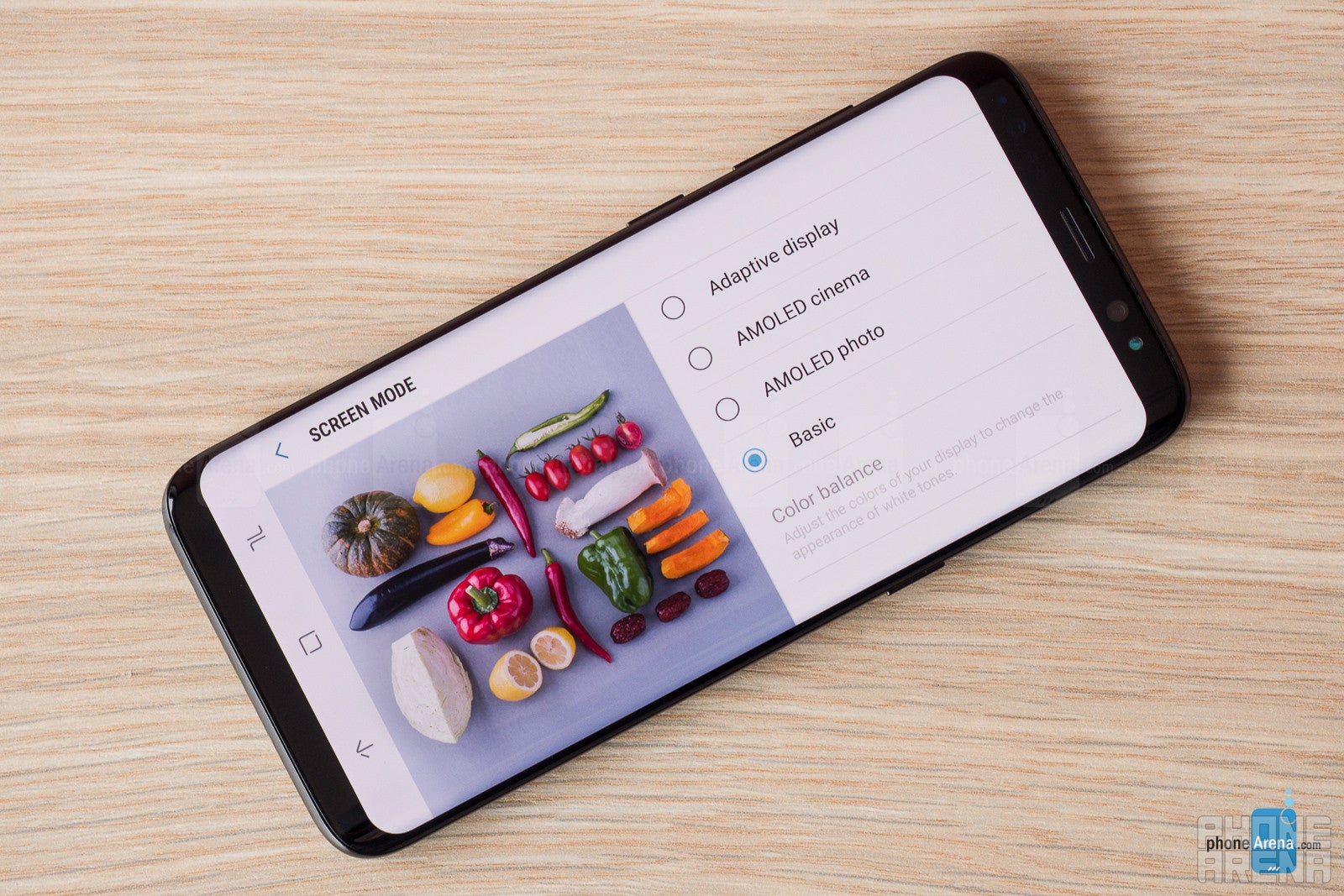
For all intents and purposes, the displays of the Galaxy S8 and the G6 are their one true highlights. And what highlights these two are!
The so-called 'Infinity Display' up front the Galaxy S8 is a 5.8-inch Super AMOLED affair that boasts the peculiar resolution of 1,440 by 2,960 pixels, making it delightfully crisp at 570ppi.
In the other camp, the LG G6 is rocking a 5.7-inch IPS LCD display with a resolution of 1,440 by 2,880 pixels that works out a pixel density of 561ppi. Albeit this metric is lower than the Galaxy S8's one, both are so extremely high that there isn't any visible difference.
What's common about both devices is that they are straying away from the standard 9:16 aspect ratio — the G6 is employing the 9:18 one, whereas the Galaxy S8 goes even further with its 9:18.5 aspect ratio. This taller aspect ratio doesn't play too well with most video and games, but it does give developers a bit more real estate to use up for their apps and interfaces. At this time, there isn't much out there to make good use of it.
As far as display quality goes, both devices boast pretty good panels. In its Basic mode, the Galaxy S8 represents colors more correctly than the G6, as the latter's color rendition is a bit off and slightly over-saturated for our liking. Both the Galaxy S8 and the LG G6 are bright enough, easily clocking in at more that 500 nits of brightness, with the S8 even capable of hitting 1000 nits in certain situations. Measuring at 8639K, the display of the G6 is noticeably colder than the more natural one on the Galaxy S8, which clocks in at 6777K.
Interface and functionality
Samsung and LG are redefining Android, and that's a good thing

You'll get treated to Android Nougat on both devices, but you'll hardly be able to tell that — both the Galaxy S8 and G6 feature heavily-modified interfaces that have little resemblance to stock Android.
Samsung has really improved its the stock interface over the years, and it wouldn't be too far-fetched to say that the Galaxy S8's iteration is the best one yet. With fresh modern visuals and streamlined menus, it's quite likeable and straight-forward. Some of the noteworthy new features include customizable software buttons, which can be swapped per will.
The same applies to the G6 as well – its interface has also been streamlined a bit and offers a good chunk of customization options, but unfortunately, very few of these are functionality-oriented. Its interface also heavily emphasizes the 2:1 aspect ratio of the display – using multi-tasking splits the screen in perfect 1:1 squares, while select stock apps will make full use of the tall display in landscape mode.
Both phones have some issues with the way they display content, both multimedia and apps as well. With media content, the situation is similar – watching a YouTube video on the LG G6 means that a portion of the display will get letterboxed, while the Galaxy S8 lets you crop and fill the screen with a 16:9 video but doing that will sacrifice the top and bottom portions of the video.
Probably the single biggest problem with the functionality of the Galaxy S8 is its fingerprint scanner positioning. It's too high at the back, meaning that you might have some issues trying to reach it with your index finger while holding the Galaxy S8 normally. Your finger does not naturally fall there, which requires a bit of fiddling and potentially smudging the camera lens. In this regard, the LG G6 fares inherently better – its center-positioned scanner is easier to reach and locate; it also doesn't require you to stretch your finger.
The saving grace of the Galaxy S8 are the on-board iris scanner and facial recognition features. These let you unlock the phone without having to resort to that not-so-comfortable fingerprint sensor.
When it comes to unique features, the Galaxy S8 introduces Bixby, Samsung's flashy new “me-too” smart assistant that wants to make users' lives easier. Samsung's so excited about Bixby that it has even thrown in a dedicated button on the side of the phone which launches it. However, Bixby is crippled right now as some of its features are not available yet – for example, voice commands will arrive at an undisclosed date later this spring. Tsk, tsk, not off to a good start here, Samsung! Further adding to the confusion is the fact that the Google Assistant is now also available on the Galaxy S8, and this one's already doing most of the things Bixby will eventually do as well — do we really, really need two smart assistants on one and the same device?
In the other camp, the LG G6 'only' comes with the Google Assistant on board, and we largely feel that this is totally sufficient for anyone's needs. With Google's know-how under your fingertips, the lack of a dedicated Bixby-like feature is unlikely to be such a loss.
Last but not least, it should be mentioned that both devices sport always-on display features that aim to show relevant information and incoming notifications to the user when the phone is asleep. You might find these useful, but you best leave them disabled for squeezing out some additional battery life out of your device.
Processor and memory
That Galaxy is unbeatable, but should the G6 even battle?
It's easy to bash the LG G6 for having a last-year chipset on board: the quad-core Snapdragon 821 inside is by no means a slouch, but it can't quite reach the scores of the octa-core Snapdragon 835 silicon of the Galaxy S8 in synthetic benchmarks or really heavy 3D games.
Notice how we explicitly mentioned synthetic benchmarks and heavy 3D games? On paper, the Snapdragon 835 runs circles around the Snapdragon 821 in terms of performance, but we highly doubt that anyone will be able to notice significant and ground-breaking difference between the two handsets when it comes to regular real-life usage. In fact, when it comes to user interface fluidity, the G6 often matches or outpaces the Galaxy S8.
There are 4GB of RAM on both devices, which is pretty much the standard for Android flagships these days. As far as storage goes, the Galaxy S8 offers 64GB of storage right out of the box and also allows you to throw in a microSD card if you wish so; the LG G6 treats you to 32GB and it also has that coveted-by-many microSD card slot present.
Camera
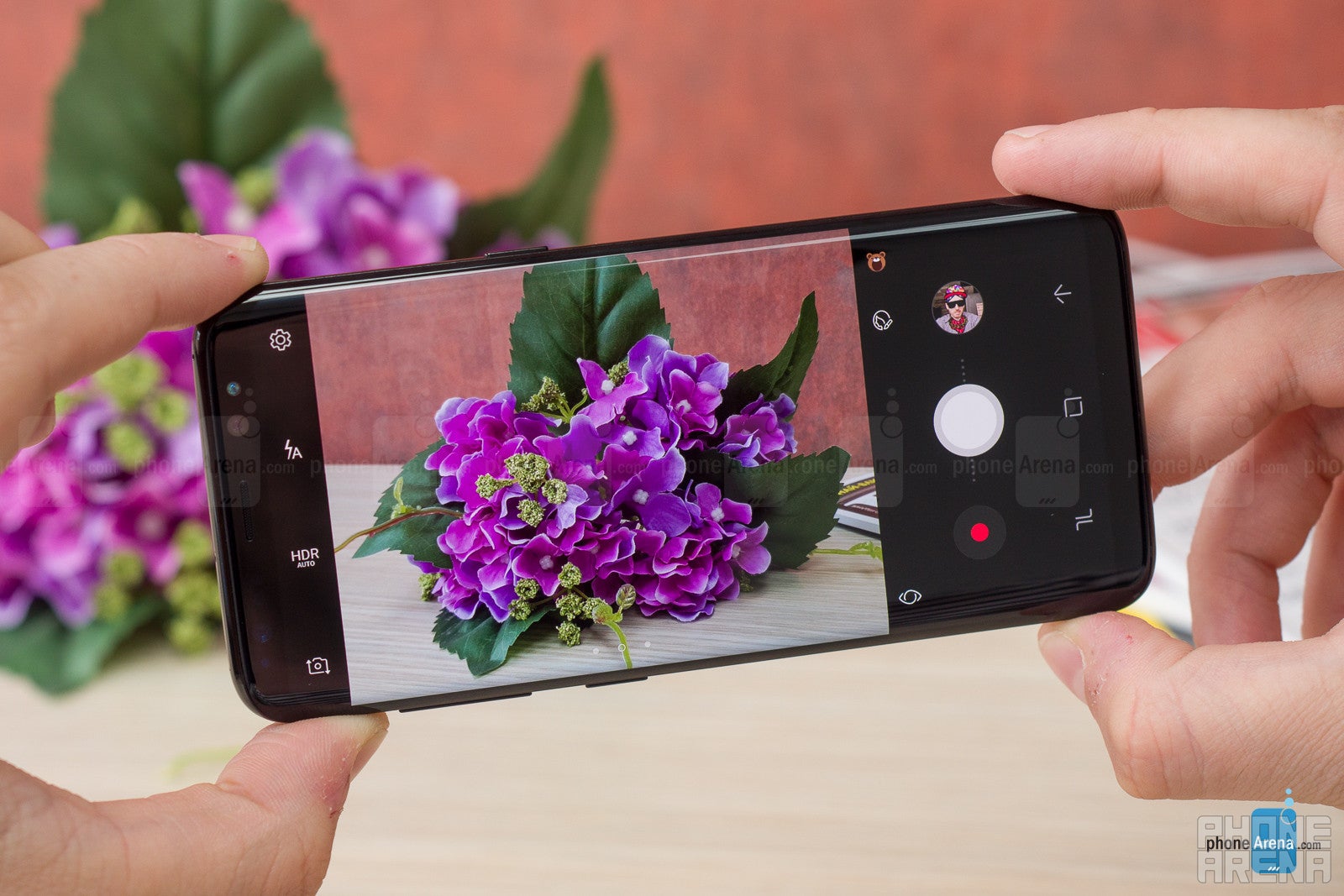
The camera can safely be viewed as the make-or-break aspect of any modern smartphone. With the Galaxy S8 and the LG G6, we have two spectacular camera performers at hand.
There's a single 12MP camera at the back of the Galaxy S8, which is mostly similar to what we saw on the Galaxy S7 in terms of specs. It has a 1/2.55” sensor with large 1.4μm pixels and a pretty wide aperture of f/1.7 that is guaranteed to suck in lots of light in challenging lighting conditions. There's also optical image stabilization present and a dual-pixel autofocusing system that does its mojo real quick.
Meanwhile, LG continues to back its dual-camera agenda, which couples a regular shooter with a wide-angle affair similar to the G5 and the V20. There's a regular camera with a 71-degree field of view accompanied by a 125-degree wide-angle one; both of these share the same 13MP 1/3” camera sensor that has somewhat small 1.12μmpixels. Aperture stands at f/1.8 for the main cam and f/2.4 for the wide-angle one. The smaller sensor and the narrower aperture of the G6 spells bad things for its low-light camera performance, but there's only way to say if this will be the case.
In terms of interface, we find either phone quite intuitive and dead-easy to use. The advent of gesture-based switching between the different modes and cameras is a welcome addition to the Galaxy S8, while the G6 also takes a page of that book by allowing you to switch between the rear and front cameras with a finger flick.
Image quality
The Galaxy S8 and the LG G6 are pretty spectacular camera phones, definitely among the best in their class. However, a close inspection will eventually reveal that one of the flagships is the slightly better overall performer.
When it comes to color reproduction, the Galaxy S8 seems to have a small edge – it's not in each and every picture, but there are some instances where the S8 manages to come up with slightly more natural white balance than its rival. The G6 seems to favor slightly warmer colors, which is also noticeable in the portrait pictures it takes, which might sometimes lead to unnaturally yellow skin tones.
When it comes to detail, the Galaxy S8 tends to perform a tad better, mostly in situations that involve dimmer lighting. Indoors and in low-light is where the GS8 produces superior results. Otherwise, in bright and outdoor conditions, detail levels are mostly identical.
Front-facing camera
Up front, the Galaxy S8 has an 8MP f/1.7 selfie shooter, whereas G6 users will have to resort to a 5MP f/2.2 one up front their phones. Despite the megapixel difference and the fact that no one pixel-peeps on selfies, the two devices are pretty comparable when it comes to overall detail rendition – hairs, moles, and tiny skin imperfections are present for you to examine if you wish so.
Video-recording
In terms of video recording, both devices shoot 4K at 30fps and are pretty comparable in terms of quality. The G6 tends to over-sharpen things somewhat in this mode. It also takes a bit longer to autofocus when a subject is introduced in close distance, whereas the Galaxy S8 passes this test with flying colors. The G6, on the other hand, records a bit better audio than the Galaxy S8, with human voice being truer to real-life than the Galaxy S8, which has a specific hollow vibe to it.
Multimedia
HDR video content? We are not worthy!
In terms of multimedia, both the Galaxy S8 and the G6 are both focused on solving a problem we don't have yet, i.e. consuming 2:1 video content on our smartphones. Because of the up-and-coming Univisium video format which utilizes this aspect ratio, the Galaxy S8 and G6 are future-proof and ready to tackle any content that's shot in this ratio.
However, this premature solving of a non-existing problem only creates new issues with the predominant kind of media out there – watching 16:9 videos on such displays is tricky. In particular, watching such a video on the G6 will introduce letterboxing, which essentially means you are losing some screen real-estate while consuming regular videos and movies. In the meantime, the Galaxy S8 lets you stretch regular 16:9 videos to fill in the whole display of the phone, but some of the top and bottom will be cut out, which is not very nice.
As we mentioned before, both phones support HDR video content, which looks stunning and all but is quite scarce and hard to come by yet.
Battery life
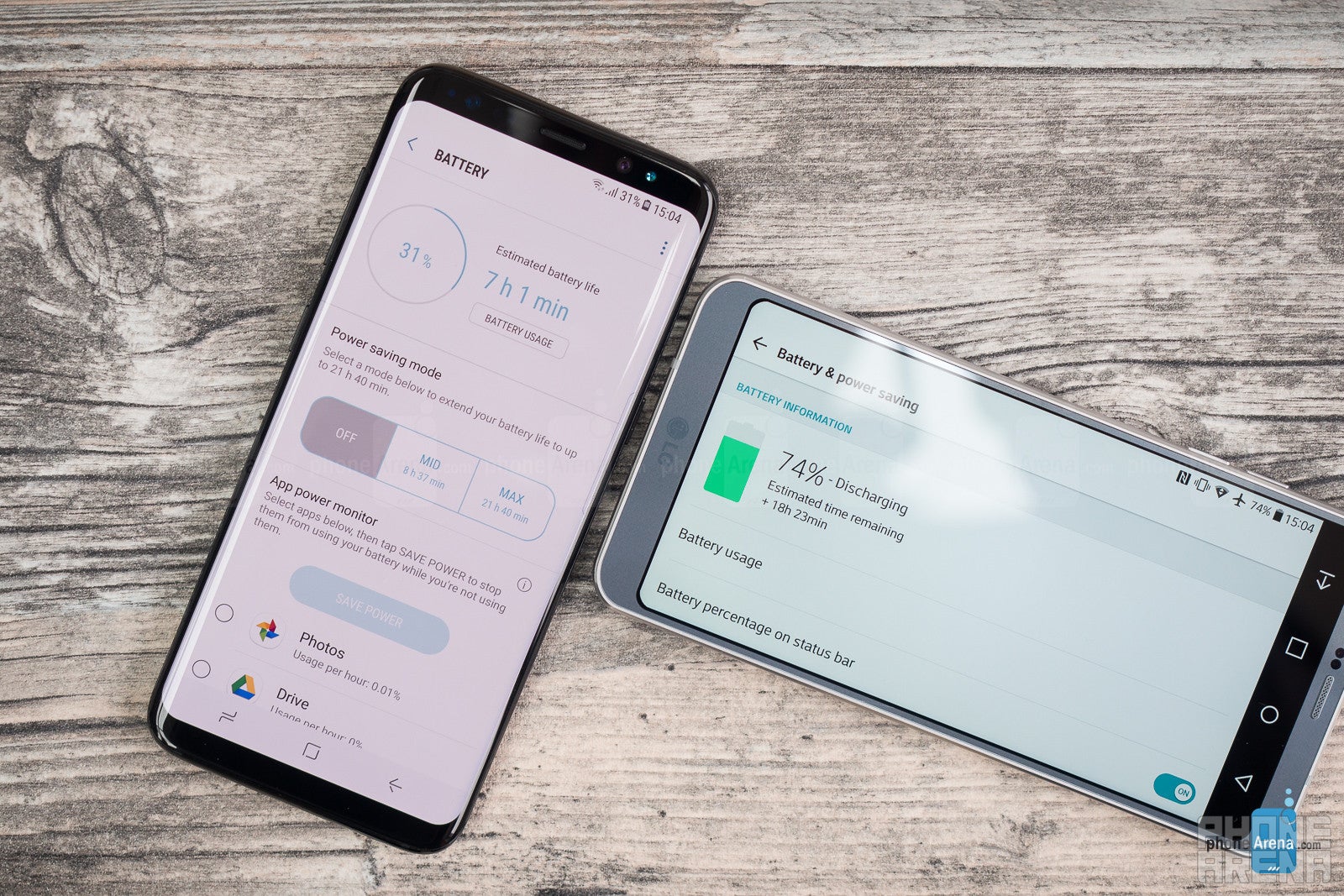
Keeping the show going on in the Galaxy S8 is a 3,000mAh battery that has gone through an 8-point battery check in order to, you know, avoid a new conundrum of Galaxy Note 7-like proportions. We really hope Samsung has learned from its past mistakes, but the most important aspect of all is, of course, battery life. We put the Galaxy S8 through our custom battery test, and the S8 lasted for 8 hours and 22 minutes. Fast and wireless charging solutions have also made the cut on the Galaxy S8. How fast does it charge, though? It took the phone exactly 100 minutes to go from zero to hero, which is a rather good result.
Meanwhile, the G6 carries a relatively large 3,330mAh battery considering the phone's overall size. But the important question is – how long does this one last for? The LG G6 endured for 6 hours and 20 minutes in our battery test. Not bad, but not ground-breaking either. The US version of the phone sports something that we really appreciate, and that's wireless charging. Qualcomm's QuickCharge 3.0 is also present on the G6, which allows the flagship to go from 0 to 100% in 102 minutes.
Conclusion
No doubt about it – these two are the best of the best Android devices on the shelves at the moment. Both Samsung and LG have put their hearts in the respective flagships and the results of that are visible – there's hardly an aspect in which either phone disappoints or fails.
Truth is, no matter which one you go for, you are rather unlikely to get disappointed to the point of wishing you could reverse time and grab the other device. There are certain aspects in which the Galaxy S8 emerges victorious by a margin, as in display quality, battery life, and design, but rest assured the G6 holds its ground in terms of overall ease-of-use, plus it has that neat dual-camera at the rear.
In the end, pricing would likely determine whether you'd purchase a shiny new Galaxy or a neat G6 – LG's offering retails a bit cheaper across the major US carriers, which might just be enough to balance things out between these two rivals.
Samsung Galaxy S8
Pros
- Fancy exterior design
- Slightly better camera
- More convincing software design
LG G6
Pros
- A bit cheaper without compromising much
- Versatile wide-angle camera lens

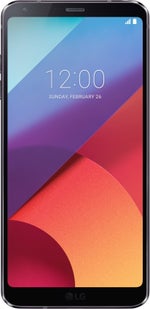



























Things that are NOT allowed: